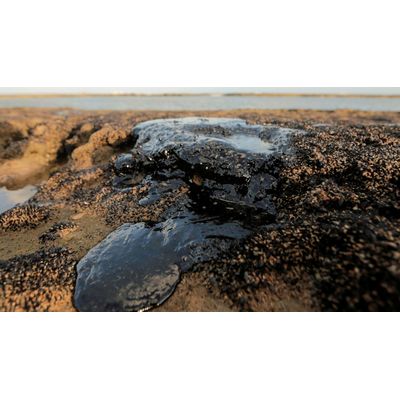

- Home
- Companies
- Beston Group Co., Ltd.
- Articles
- Soil Ecological Deterioration with Oil ...

Soil Ecological Deterioration with Oil Sludge Pyrolysis Technology
The global environmental impact of industrial waste, particularly oil sludge, has become an increasingly pressing issue. The accumulation of oil-contaminated waste in landfills or open environments leads to severe soil contamination, adversely affecting soil quality, biodiversity, and agricultural productivity. However, advancements in pyrolysis technology offer a promising solution to alleviate this ecological deterioration. Through the use of oil sludge pyrolysis plant, oil sludge can be converted into valuable byproducts, such as bio-oil, carbon black, and gas, thus offering a twofold benefit: waste remediation and resource recovery.
Oil Sludge and Its Ecological Impacts
Oil sludge is a complex, hazardous byproduct generated from the extraction, refining, and processing of petroleum. Comprising a mixture of oil, water, and solid particulate matter, this sludge is notoriously difficult to manage and poses a significant environmental threat. When improperly disposed of, oil sludge leaches into the soil, leading to the contamination of groundwater systems and the destruction of soil microbial ecosystems.
The high oil content in the sludge hampers the natural biological processes in the soil, reducing its fertility and rendering it less capable of supporting plant life. Additionally, toxic compounds such as heavy metals and persistent organic pollutants (POPs) often present in the sludge can bioaccumulate in the food chain, further amplifying environmental and health risks.
Pyrolysis Technology as a Solution
Oil sludge pyrolysis technology represents an advanced waste management method that addresses both the environmental impact of oil sludge and the need for sustainable energy sources. In a pyrolysis plant, oil sludge undergoes thermal decomposition in the absence of oxygen, breaking down the complex hydrocarbons into simpler molecules, including bio-oil, gaseous compounds, and carbon-based solid residues.
The process occurs at controlled temperatures, typically between 350°C and 500°C, allowing for the efficient breakdown of oil components into liquid oil and gas. These byproducts can be further processed or used as fuel for energy generation, reducing reliance on traditional fossil fuels.
Restoration of Soil Quality
One of the primary ecological benefits of oil sludge pyrolysis is its potential to restore contaminated soils. The bio-oil produced during the pyrolysis process contains valuable organic compounds that can be used to treat degraded or polluted soils. These compounds, when introduced to the soil, can improve its structure, increase nutrient availability, and foster the growth of beneficial microorganisms.
Furthermore, the solid carbon residue—often referred to as biochar—can be used as a soil amendment. Biochar has been shown to enhance soil aeration, retain moisture, and improve nutrient retention, which is particularly beneficial in soils affected by oil contamination. Its porous structure provides a habitat for soil microorganisms, helping to re-establish a healthy, balanced soil ecosystem.
Reducing the Toxicity of Oil Sludge
Pyrolysis does not only convert oil sludge into usable byproducts but also neutralizes many of the harmful compounds contained within the sludge. During the pyrolysis process, the volatile organic compounds (VOCs), heavy metals, and POPs are either decomposed or trapped in the carbon residue, preventing them from leaching into the environment. This containment significantly reduces the potential for groundwater contamination, making the land safer for agricultural use and local ecosystems.
Additionally, the gas produced during pyrolysis can be captured and used as an energy source for the plant’s operations, reducing the need for external energy inputs and further promoting environmental sustainability. This process helps mitigate the negative effects of oil sludge while contributing to the reduction of global greenhouse gas emissions.
The Economic and Environmental Benefits of Oil Sludge Pyrolysis
The adoption of pyrolysis technology for oil sludge management offers substantial economic and environmental advantages. By converting waste into valuable products, such as bio-oil and biochar, a pyrolysis plant helps generate revenue while addressing a critical waste disposal issue. Bio-oil can be used as a fuel, creating a self-sustaining energy loop for the pyrolysis plant, while biochar can be sold as a soil amendment to agricultural markets.
On the environmental front, oil sludge pyrolysis minimizes the need for hazardous waste landfilling, reducing soil contamination and supporting the regeneration of ecosystems. By recovering energy from the waste, the technology also reduces the demand for fossil fuels, contributing to a reduction in carbon emissions and promoting a more sustainable circular economy.
